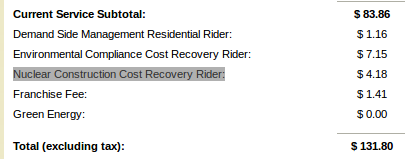Two Southern Company coal-fired electric generating plants nearThat’s the plant that supplies most of our power in south Georgia, whether you get it through Georgia Power or Colquitt EMC.Atlanta are the biggest contributors to global greenhouse gases in the United States, and a third Southern plant in Alabama is the third-biggest emitter, an analysis of environmental data found Wednesday.
The nation’s No. 1 producer of carbon dioxide — the heat-trapping gas that is held chiefly responsible in models of global warming — is Plant Scherer in Juliette, about 65 miles southeast of downtown Atlanta, according to the Associated Press analysis of data reported to the U.S. Environmental Protection Agency for 2010.
The No. 2 producer is Plant Bowen, just west of Cartersville, about 50 miles northwest of central Atlanta, and the third-largest is Plant Miller in Quinton, Ala., about 165 miles west of Atlanta near Birmingham, the AP said.The story also notes (as a picture caption):
Georgia Power recently installed pollution-control equipment, called baghouses, to curb mercury pollution at Plant Scherer. EPA rules that will regulate mercury likely will lead to the utility to install additional baghouses at other coal-fired plantsHm, that’s exactly what Southern Company said it was incompetent to do. Apparently it figured out to do what other power companies already knew how to do.
Anyway, pumping out CO2 from coal plants is what Southern Company is doing instead of solar and wind.
-jsq










